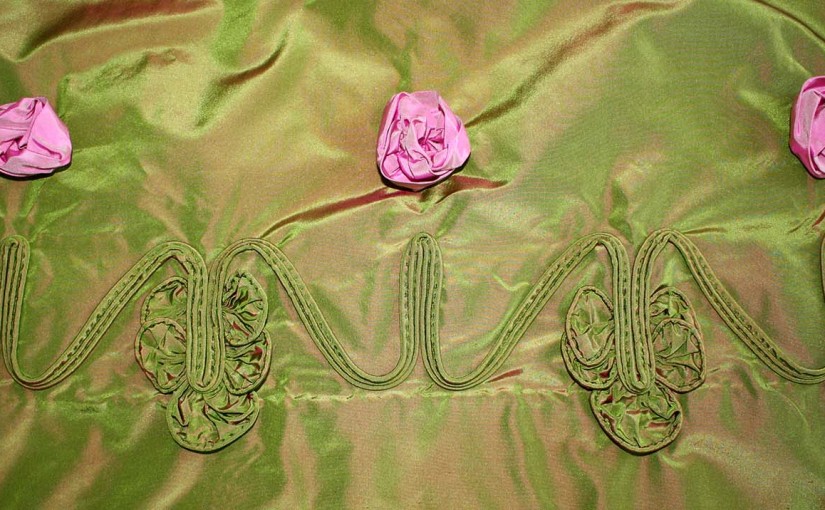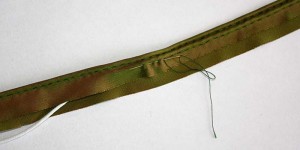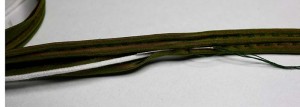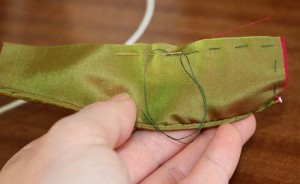Rose and tendril patterns where quite popular during the 1830´s, printed on cotton or as appliqués on dresses. I´ll show you how I made the trim for the 1830´s green silk ball gown.
First you´ll need some yards, about 9-11,yds. of bias tape with a width of 3,5cm to 4cm depending to the diameter of your piping cord. Best serves a cord with a diameter of 2mm. Now you need to insert three rows of cord in the following manner. Turn down the bias tape about 1,5cm, wrong sides together and insert the first cord. Sew along the cord with a small running stitch. Insert the second cord underneath and sew again along the cord with a small running stitch. Wrap the lower edge around the third cord and fell stitch along the stitching line of the second cord.
Prepare all your leaves. For a bundle of rose leafs you need four small rectangles(10×3.5cm) and a larger one (13×4.5cm). The top edges of the rectangles are piped. To pipe the top edges treat the fabric like you are going to make a rolled hem, just insert a cord while sewing. Sew along all remaining edges with a gathering stitch, pull the thread and secure the leaf with some stitches.
Mark the position of the tendril on your skirt. Depending on the skirt´s circumference, you should stretch or shorten the tendril pattern to end up with a smooth and continuous trim. Attach four small and one greater leaf underneath each downwards looking loop, on top attach the piped band and cover the raw edges. Keep care that the ends of the piped band meet somewhere at the back. Pull out the piping threads and shorten them to overlap the ends without bulk. Attach roses above the upward looking loops of the tendril.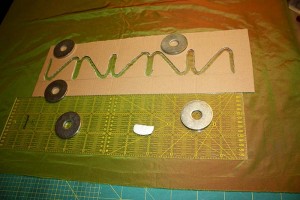

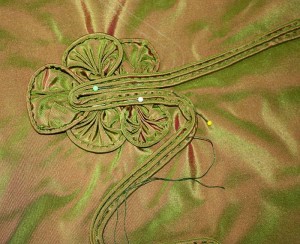
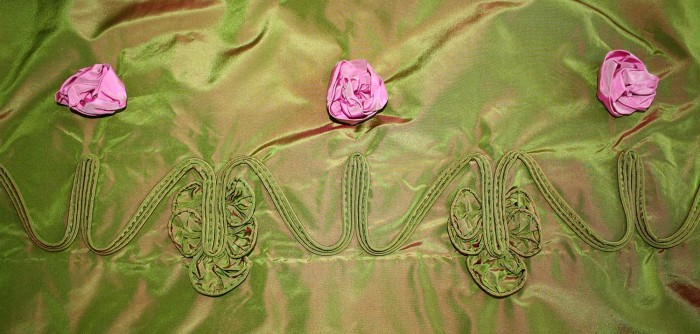
I got my inspiration for the trim from the following publication:
Zierbesätze – Rüschla, Schneidertechnische Detailarbeiten nach Vorlagen aus schwäbischen Trachtensammlungen, Trachtenkulturberatung Bezirk Schwaben, www.trachten-schwaben.de

